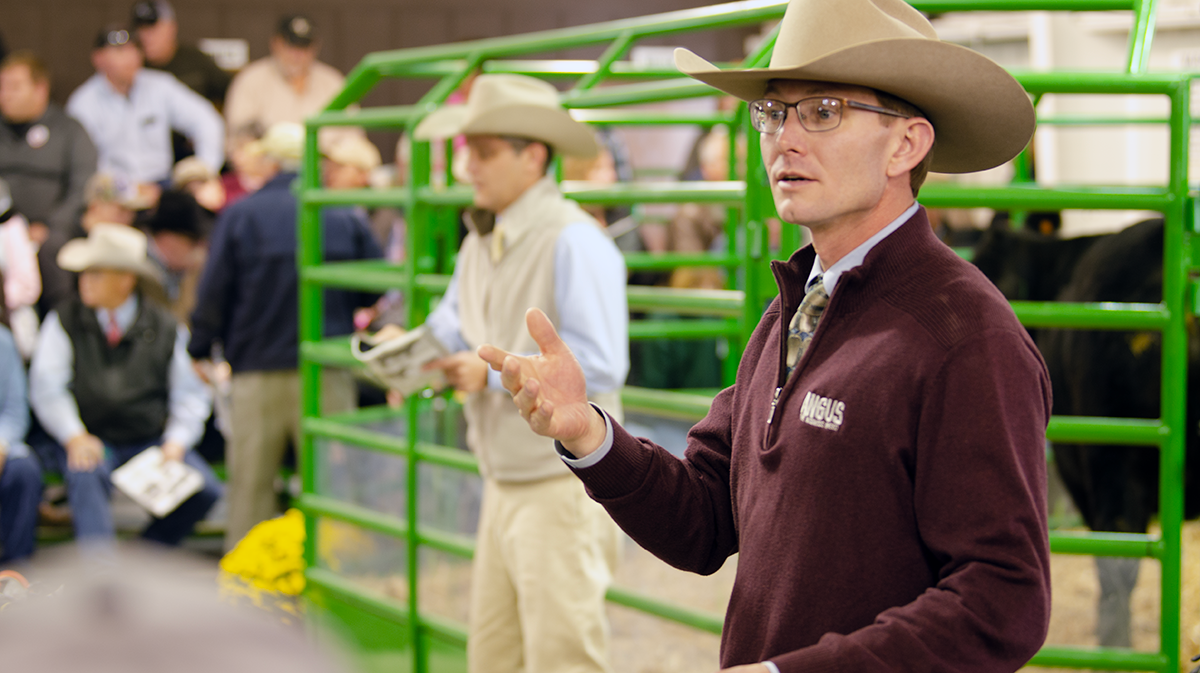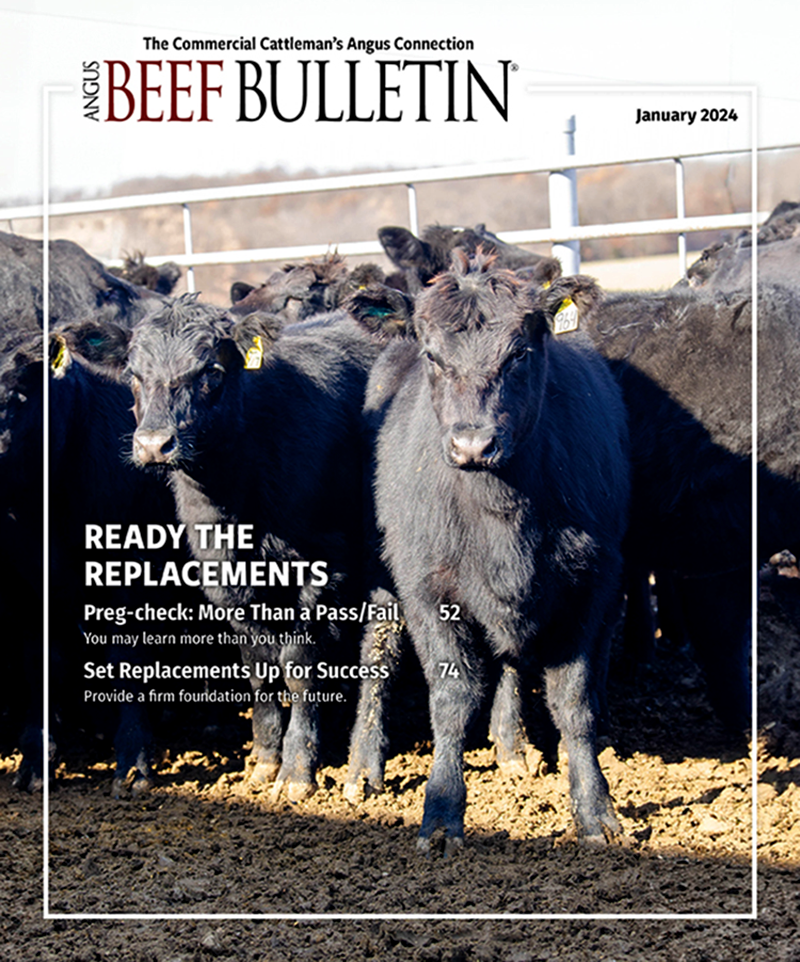
From the Field
Bull-buying tips from three of your Association regional managers.
While bull sales have already begun in parts of the country, as spring approaches commercial producers will find themselves with even more opportunities to add bull power to their operations. But with so many genetically unique, enviromentally adapted seedstock producers to choose from, what can commercial producers do to make the best decisions for their own operations? We asked American Angus Association regional managers Reese Tuckwiller, Casey Jentz and Radale Tiner.
Step one: Identify goals
“Are you selling calves at weaning? Are you retaining ownership? Are you keeping any replacement heifers?” asks Reese Tuckwiller, regional manager for Region 1, urging producers to identify whether they are where they need to be on weaning weights. “You can’t predict what you can’t measure. … You need to start a baseline there.”
Once your goals have been established, visit with breeders to gather further information.
“Try to get to know your seedstock supplier. If you’re shopping around for a new bull, don’t be afraid to do some herd visits and talk with them. Pick up the phone and find out what their current goals are, and see if they align with yours,” advises Casey Jentz, regional manager for Region 4. “Commercial producers really come out ahead when they have a seedstock producer who knows what they need and breeds cattle for their needs. It really can put them in the driver’s seat from a commercial standpoint.”
Step two: Analyze the data
When it comes to deciding — based on data — which bull is the best fit for your operation, there are a handful of tips to keep in mind when perusing sale books.
“If you’re not in the business and you don’t know what all those numbers mean, it really helps when those sale books identify where bulls rank and assign a percentile ranking from 1 to 100,” says Tuckwiller, adding that it will allow you to find bulls in the range of what you’re looking for for traits like calving ease, weaning weight or yearling weight. “Higher is not always better for certain traits.”
For new producers to the Angus breed or established cattlemen looking to add new genetics to their herd, the American Angus Association website holds a wealth of information regarding upcoming sales and breeder listings.
“There’s no better place than www.angus.org to find all the sale books,” says Jentz. “You can see books from all across the country, every different operation with different priorities and different goals, and you have those at your fingertips. There’s not a better place to steer a commercial guy of what’s out there.”
Putting information directly into the hands of producers, the Association website offers multiple methods for cattlemen to sort sale books. As an example, potential buyers can sort sale books on www.angus.org by criteria, including expected progeny differences (EPDs) or location.
According to Jentz, there are plenty of people who love the printed sale book, but with where the industry is growing online, there’s no better place than the sale book page on www.angus.org.
Step three: Be flexible
The biggest thing to keep in mind is to have a plan. This should include the type of bull you’re using, the budget you have and what your operation needs in the future. Not only from an environment standpoint, says Jentz, but including your goals and what you’re looking to do.
“There are lots of bulls for sale, and if you have a budget that works for your operation and you don’t get the bull, there are more bulls out there,” advises Jentz. “There are a lot of great Angus bulls across the country. Just be ready to plan. They’re not all going to work, so don’t be afraid to back up, go to the next guy and find the one that’s going to work for you.”
While many commercial producers might prefer to stay close to home so that cattle are adapted to a particular area, good Angus cattle can be found nationwide.
“A lot of people like to buy relatively close to home, but if you find a program that has similar goals, you may need to go a little farther,” says Radale Tiner, Association regional manager for Region 9. “Angus.org is a good place to find those Angus calendars and sale books. Some people may need to go a little farther than others, but sometimes you can find them near your back door.”
Editor’s note: “From the Field” is a regular Angus Beef Bulletin EXTRA column featuring advice, industry news and Angus updates from regional managers of the American Angus Association. For information on how to contact your regional manager, please visit https://www.angus.org/assoc/RM. [Lead photo by Shauna Hermel.]



